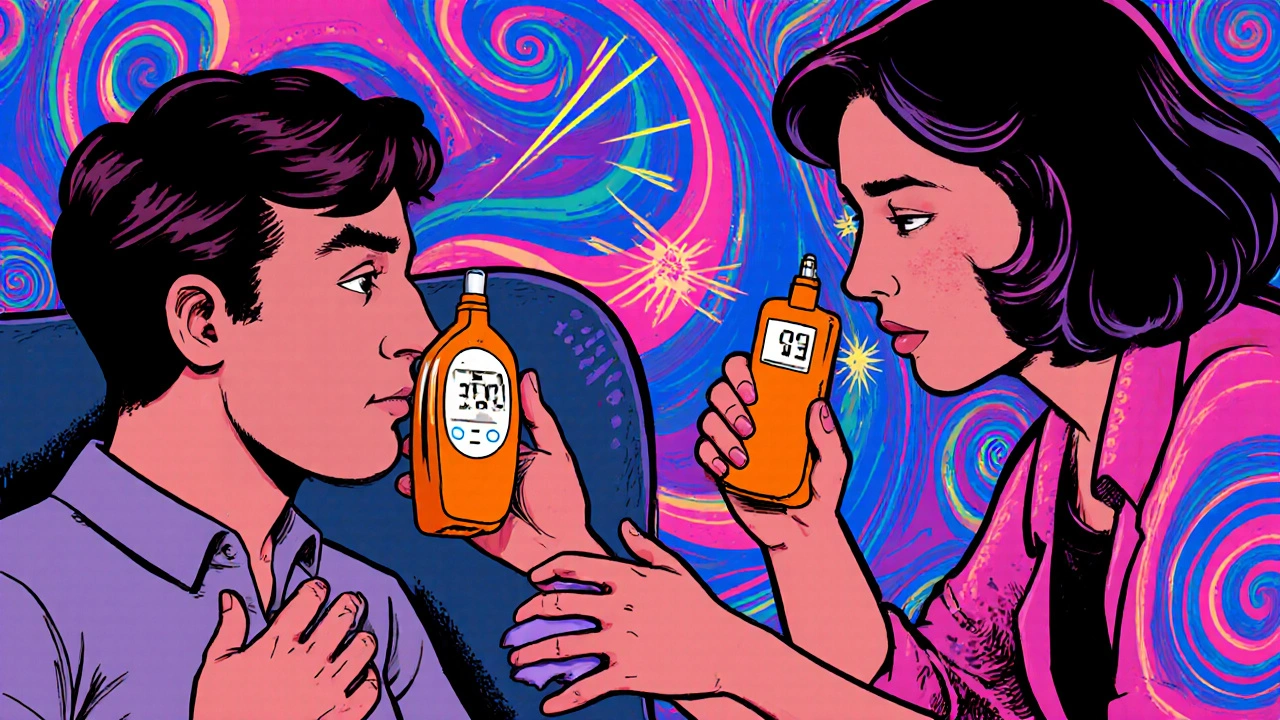Glucagon Administration: How, When, and Why It’s Used in Emergencies
When someone with diabetes has a severe low blood sugar episode and can’t swallow or is unconscious, glucagon administration, a life-saving hormone injection that quickly raises blood sugar. Also known as emergency glucose rescue, it’s the go-to tool when sugar tablets or juice won’t do the job. Glucagon isn’t a daily medication—it’s a backup plan, a rescue shot you hope you never need but must have ready.
Glucagon administration is most often used for hypoglycemia treatment, a dangerous drop in blood sugar that can lead to seizures, coma, or death if untreated. It works by telling the liver to dump stored glucose into the bloodstream. Unlike eating sugar, which takes minutes to absorb, glucagon kicks in within 10 to 15 minutes. It’s the only option when the person can’t swallow or is too confused to take anything by mouth. Caregivers, family members, and even school nurses are often trained to give it—because waiting for an ambulance isn’t always safe.
There are a few key things to know about glucagon injection, the standard form of glucagon delivery. First, it comes as a powder and liquid that you mix right before use. Second, it’s injected into the thigh, arm, or stomach—same as insulin. Third, after giving it, you must turn the person on their side to prevent choking if they vomit. And fourth, even if they wake up, they still need medical follow-up. Glucagon doesn’t fix the cause—it just buys time.
Most people who need glucagon have type 1 diabetes, but some with type 2 on insulin can also be at risk. It’s not just for adults—children as young as toddlers may carry it if they’re on insulin. That’s why many schools and daycare centers now keep glucagon kits on hand. The FDA has approved newer versions too, like ready-to-use nasal sprays and auto-injectors, which make it easier for non-medical people to use without mixing.
What you won’t find in most guides is how often glucagon administration fails. If someone has been fasting, drinking alcohol, or has liver disease, their body might not respond well. That’s why knowing the signs of worsening hypoglycemia matters—trembling, sweating, confusion, slurred speech—don’t wait for unconsciousness. Call 911 early, even if you give glucagon. And always check the expiration date. Glucagon degrades over time, especially if stored in heat.
You’ll also see people asking if glucagon can be used for high blood sugar. The answer is no—it’s only for lows. Mixing it up could be dangerous. And while some online stores sell glucagon without a prescription, it’s still a prescription drug in most places. Using an expired or fake kit is risky. Stick to trusted pharmacies and make sure your kit is current.
The posts below cover real-world cases, step-by-step guides for giving glucagon, what to do after the injection, and how to prevent the low blood sugar episodes that lead to emergency use. You’ll find advice from caregivers, doctors, and people who’ve lived through it. Whether you’re a parent, a diabetic, or just helping someone who is, this collection gives you the facts you need—no fluff, no jargon, just what works.
